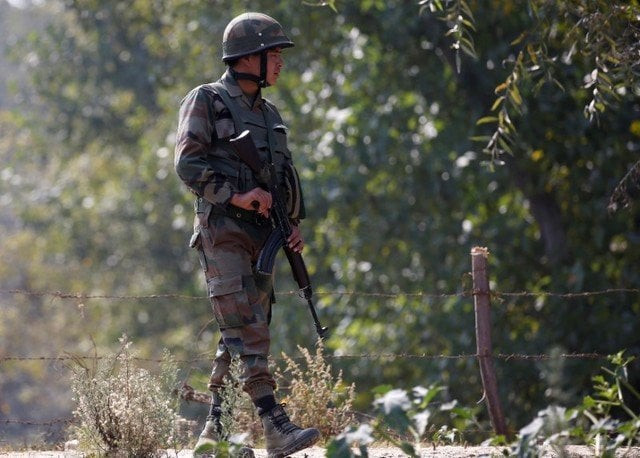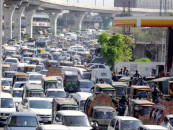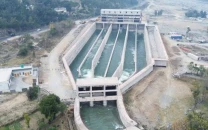Kashmir’s killing fields
Kashmir’s scenery often draws comparisons to paradise; irony is often matchless in its cruelty

Major Shikhar Thapa was deployed in Uri sector of the Indian-Occupied Kashmir (IoK). PHOTO: REUTERS
Since 1947, Kashmir has been overrun by Indian troops who ensure the security of the region by annihilating any and all Kashmiris who do not care for militaries that infringe on the sovereignty of the soil they stand upon. The Indian army’s methods have grown more sophisticated in their barbarism over the past few decades, most recently adding mass blinding to their repertoire of altruistic atrocities. The BJP leader and RSS mascot, Prime Minister Narendra ‘Very Strong Man’ Modi’s response? To chastise P Chidambaram for using language that sounded too ‘Pakistani’. Thankfully, populists pushing hyper-masculinity and nationalism have never been detrimental to any nation. Your humble correspondent is fairly certain Gandhi said that.
Indian atrocities cannot suppress voice of Kashmiri people: AJK president
In 1947, the Kashmiri king, Maharaja Hari Singh, was to decide the fate of the territory following the British government’s clumsy vacation of the subcontinent after the World War II, that conflict having depleted both, its reserves and its penchant for brutal colonialism. Despite a majority of the region’s inhabitants being Muslim, the Maharaja opted to sign the ‘Letter of Instrument of Accession to India’. This questionable process might have been avoided if the British had been as successful at drawing up borders as they were at creating causes for nations to require borders in the first place. As a result, we have the Kashmir conflict. It is complex, frightening and has been nicknamed a ‘Nuclear Flashpoint’.
This has been bad for tourism. No one wants to summer in a region where you can find between 600,000 and 700,000 Indian troops launching ‘counter-terror operations’. The United Nations and a variety of human rights groups have found evidence of these soldiers committing all manner of horrors under this thoroughly scare-quoted moniker, including enforced disappearances, mass murder, molestation, rape, torture, recruitment of child soldiers, hidden mass graves, attacks on hospitals and an overall butchering of international human rights by any interpretation. In the previous 15-20 years, nearly 90,000 people have lost their lives and another 10,000 have simply vanished. Amnesty International has called the severity of the torture practised by Indian troops as being “beyond comprehension.” Not to worry. Prime Minister Narendra ‘2002 Gujarat Massacre’, Modi has denied most of these charges.
In 2014, after flooding devastated parts of Kashmir, the Indian Army’s relief efforts were met with demands from every corner of Indian media, asking Kashmiris to bend the knee and swear allegiance to their saviours as if they were penning poor fantasy novels. A jingoistic media more concerned with stoking national fervour than dispensing facts serves a poor purpose. But the blame lies more with a government that wilfully encourages its media’s promotion of a haphazard nationalistic purview that rationalises concerns with treading on Kashmir.
In 2016, Burhan Wani’s killing caused massive protests. The Indian Army’s response was to blame Pakistan both for the Kashmiris causing the unrest and for Wani himself, despite the former being locals and the latter being a homegrown rebel. It also responded to the protesters with ‘non-lethal’ pellet shotguns which served to permanently scar and blind Kashmiris in the hundreds. Most were teenagers.
In 2017, Farooq Dar, a weaver, came out to vote in the Srinagar elections despite 93% of his fellow Kashmiris refusing to. He was beaten and tied to an Indian Army jeep on a charge of throwing stones at soldiers. Dar was driven for 28kms through the area he called home. The major’s thought process was that tying a Kashmiri to a vehicle as a ‘human shield’ would deter stone-pelters. Later, a police investigation report would negate Major Leetul Gogoi’s allegations against Dar. He was reprimanded by higher-ups in the army.
The report was met with silence and the major was awarded a commendation recognising those who display “individual acts of gallantry.” Dar has seen no semblance of justice despite filing several inquiries. He has no recourse. What he has is regret that he exercised his constitutional right to vote. He says that his life is no longer the same and that now, “people keep looking at me.”
In late 2017, photojournalist Kamran Yousuf was arrested by the National Investigation Agency (NIA). Yousuf was charged with stone-pelting and utilising social media to attack security personnel. No evidence of these charges has been presented. The NIA claims that Yousuf is not a journalist, as he did not photograph ‘social/developmental activity by the state government or government of India’. The NIA’s lackadaisical understanding of journalism has drawn the attention of non-profits such as New York’s Committee to Protect Journalists. Programme coordinators have gone on record to say that Yousuf’s work is “in the best spirit of journalism” and that the NIA is “out of its league” in telling journalists what they can or cannot cover. Yousuf remains in custody.
Killing of Kashmir youth needs to be investigated: UN secretary general
It is little wonder that a senior researcher for Human Rights Watch said, “In the history books, Kashmir is going to be where justice completely failed the promises of Indian democracy.” But there are still viable solutions on the table. India should withdraw from Kashmir as requested to by the UN, international law, and, most importantly, the people of Kashmir. This is unfortunately unlikely, given Prime Minister Narendra ‘Tight Hugs’ Modi’s refusal to even discuss the restoration of autonomy for the state lest he lose votes garnered by the frothing fervour of the doctrine of a Hindu First agenda.
Czech diplomat Josef Korbel wrote, “If the problem of Kashmir is not soon resolved with wisdom and in justice, a shadow may slide over the Himalayas and the Pamirs, engulfing in its darkness.” He wrote these words in April 1954 when the conflict was six years old. In 2018, it is older than most of the population of India and the darkness has engulfed the region while showing no signs of abating. In the past few days alone, the blindings have resumed and so have the dozens of daily surgeries with all their middling success. Until this brand of Hindu nationalism makes room for a more accepting and tolerant ideology, the trend of lightless horrors committed on Kashmiri soil will continue to rise.
Published in The Express Tribune, April 6th, 2018.
Like Opinion & Editorial on Facebook, follow @ETOpEd on Twitter to receive all updates on all our daily pieces.













COMMENTS
Comments are moderated and generally will be posted if they are on-topic and not abusive.
For more information, please see our Comments FAQ